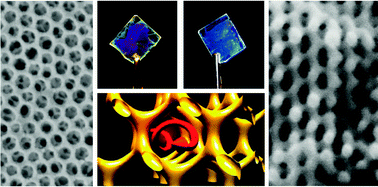Block copolymer self-assembly for nanophotonics
Abstract
The ability to control and modulate the interaction of light with matter is crucial to achieve desired optical properties including reflection, transmission, and selective polarization. Photonic materials rely upon precise control over the composition and morphology to establish periodic interactions with light on the wavelength and sub-wavelength length scales. Supramolecular assembly provides a natural solution allowing the encoding of a desired 3D architecture into the chemical building blocks and assembly conditions. The compatibility with solution processing and low-overhead manufacturing is a significant advantage over more complex approaches such as lithography or colloidal assembly. Here we review recent advances on photonic architectures derived from block copolymers and highlight the influence and complexity of processing pathways. Notable examples that have emerged from this unique synthesis platform include Bragg reflectors, antireflective coatings, and chiral metamaterials. We further predict expanded photonic capabilities and limits of these approaches in light of future developments of the field.

- This article is part of the themed collection: Celebrating our 2018 prize and award winners


 Please wait while we load your content...
Please wait while we load your content...